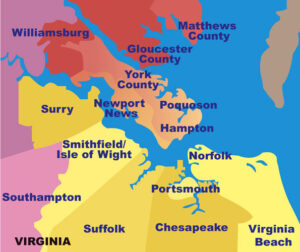by James C. Sherlock

I recommend the transformation of healthcare and physician training in the Hampton Roads.
I reject both the presumptions and the terms of the current study of a merger of ODU, EVMS, Norfolk State and Sentara to improve EVMS.
That study is funded by the organizations involved and the outcome is pre-ordained.
But it embarrassingly assesses a combination of some of the poorest performing institutions in Hampton Roads. From that baseline, it cannot possibly offer the best outcomes for the Commonwealth or the people of Hampton Roads.
In response to my essay yesterday on improving healthcare and the training of physicians in Hampton Roads, Dick Sizemore very helpfully brought up William and Mary’s objections to merging with EVMS the last time (2012) such a merger was pursued.
Elizabeth Simpson, a terrific healthcare reporter for the Virginian-Pilot before it downsized, wrote in January of 2013 of the reasons the merger didn’t work from William and Mary’s perspective included:
- William and Mary was concerned EVMS is not a well ranked medical school
- William and Mary was concerned EVMS would drain money from its own programs
- Sentara, as the incumbent affiliate hospital, would not commit more funding to the medical school.
Those are valid concerns. I will address them.
First, a new study led by the University of Virginia and EVMS should examine improving the quality of EVMS through its takeover by the University of Virginia Medical School.
This would certainly fit the mission of the University of Virginia Medical School. Additionally, the UVa Center for Health Humanities and Ethics can find no more compelling location for carrying out its mission than reversing the awful minority health numbers in Hampton Roads.
- Eastern Virginia lags behind the state and nation in infant mortality, cancer, heart disease and diabetes. Most of these poor rankings reflect disparities with minority and low-income populations.
- For instance, the infant death rate in Virginia and the United States was 5.8 out of 1,000 live births in 2017. But in Norfolk, the rate of Black baby deaths was 18.2.
- Regarding prostate cancer, the national death rate was 19.5 out of 100,000 lives in 2015. But in Portsmouth, Black men died at a rate of 66.5 out of 100,000 — nearly four times that of white men in the city. ….
The Governor ignores this at his political peril.
Second, investigate affiliation of either the Bon Secours hospitals in Hampton Roads or Chesapeake Regional Medical Center or both to the new UVa/EVMS.
Remove Sentara, which does not favor granting EVMS independence and will always create a poison pill, from the mix of hospitals considered as the affiliate hospital.
This would have the major added benefit of improving the profitability of those hospitals which remain constantly under assault by Sentara.
Third, add Hampton University to the collaboration. It is superbly led. Hampton University can provide a nursing school to the collaboration and contribute its unique Hampton University Proton Therapy Institute capabilities. It hosts the largest free-standing facility of its kind in the world. Proton therapy is most popularly used in the treatment of head and neck, brain, and prostate cancer, but growing results from its application for other cancer types, including breast, lung, GI and more, have continued to prove positive.
Fourth, re-consider the William and Mary collaboration under these new terms.
Fifth, dedicate state money to fund the transition for a fixed time frame.
The Governor, if he seeks the best for the citizens of Hampton Roads and the Commonwealth, cannot miss this opportunity.

Leave a Reply
You must be logged in to post a comment.